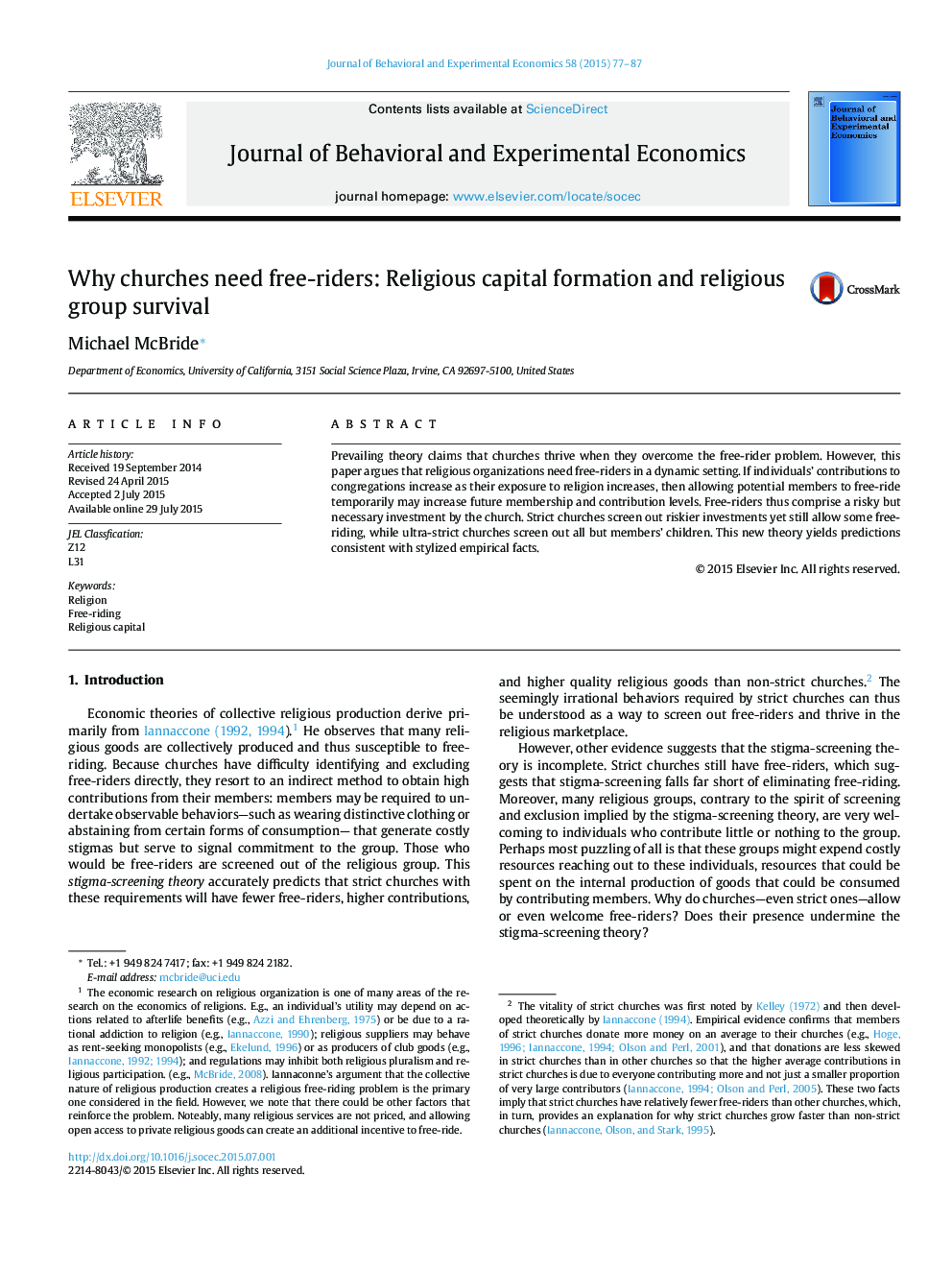| Article ID | Journal | Published Year | Pages | File Type |
|---|---|---|---|---|
| 881922 | Journal of Behavioral and Experimental Economics | 2015 | 11 Pages |
•Prevailing theory claims that churches need to eliminate free-riders.•This paper argues that churches need free-riders in a dynamic setting.•Allowing potential members to free-ride temporarily exposes them to religious goods and begins the process of religious capital formation.•Free-riders thus provide a risky but necessary investment by the church.•The theory yields predictions consistent with stylized empirical facts.
Prevailing theory claims that churches thrive when they overcome the free-rider problem. However, this paper argues that religious organizations need free-riders in a dynamic setting. If individuals’ contributions to congregations increase as their exposure to religion increases, then allowing potential members to free-ride temporarily may increase future membership and contribution levels. Free-riders thus comprise a risky but necessary investment by the church. Strict churches screen out riskier investments yet still allow some free-riding, while ultra-strict churches screen out all but members’ children. This new theory yields predictions consistent with stylized empirical facts.
